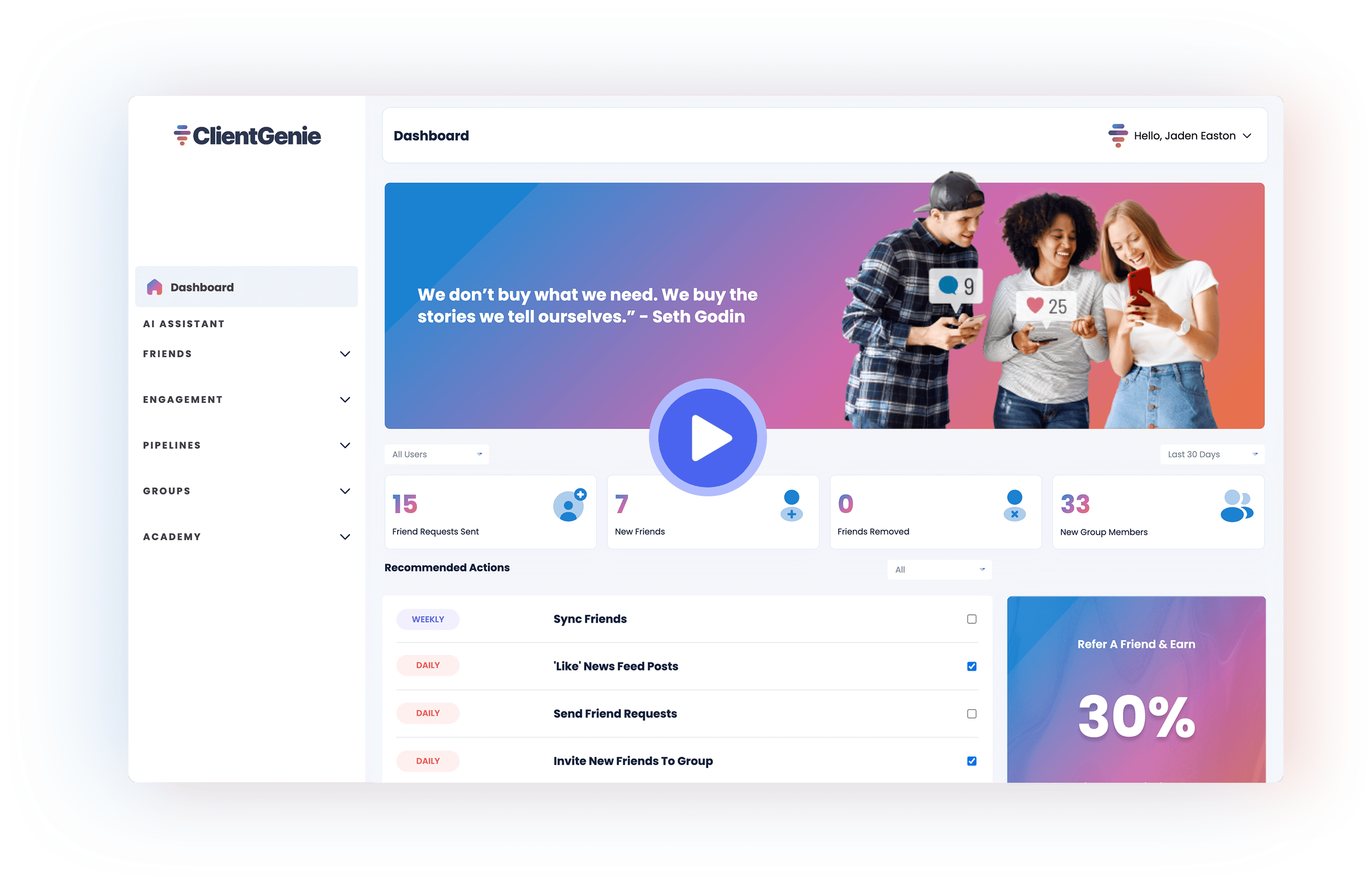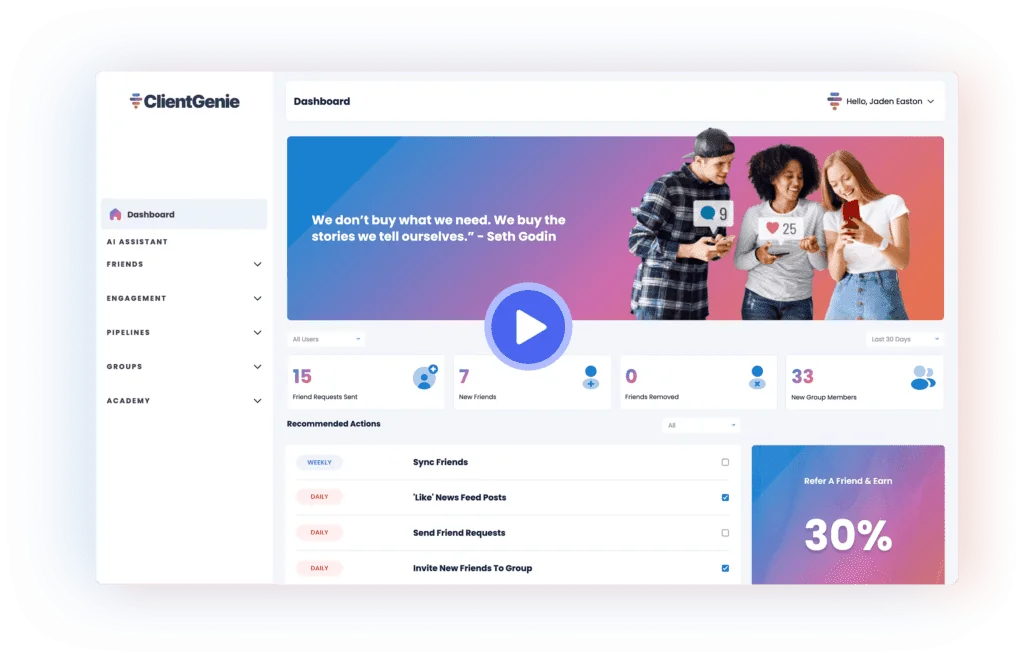Let’s cut to the chase. Talking money can feel like walking a tightrope.
One misstep — a sudden pitch, an unexpected turn — and you can send someone’s guard up faster than you can say “ROI.”
Here’s the real talk: that moment you transition into the presentation, that’s where the energy shifts. It’s where the stakes are high and everything feels a bit more… real. It’s the moment where they’re weighing every word, and you’re holding your breath, hoping you don’t tip the scales the wrong way.
I’ll let you in on a secret — that high tension? It’s not just you feeling it. It’s them too. They’re thinking about the investment, their time, their spouse’s reaction… It’s a whirlwind of emotion, and guess what? It’s completely normal.
But why the high anxiety? It boils down to two things: the element of surprise and lack of involvement. If you dive into your presentation like you’re revealing a plot twist in a thriller, you’re just cranking up the stress. And if you’re doing all the talking, not letting them get a word in? You’re not easing their anxiety; you’re building it.
So, how do you smooth things over?
Simple. You start by letting them know you can help — and not just with a blanket statement. Get specific. It shows you’ve been listening, and it shows you care. Tell them why they’re a good fit, based on the real stuff they’ve shared with you. Make it so they can’t help but nod along because they feel understood.
And then, you ease into the transition. You give them the power to invite you into the presentation. It’s like asking, “Hey, want to step through this door with me?” instead of pushing them through it. That way, when they say yes, they’re ready for it. They’re invested.
Questions at this stage? They’re gold. If they’re asking, they’re thinking seriously, and every concern they voice is one you can address head-on. That’s how you pave the way for a smooth ride through the presentation.
Now, the presentation itself — keep it simple. Show them what they’re getting. If you’re on a Zoom call, share your screen. Walk them through it. And always, always keep them involved. Ask if it makes sense, what stands out, how it could help them. Get them talking, and you’ll see — they’ll start selling themselves on the idea.
Remember, this is about them, their business, their pain points. When you make the conversation a two-way street, you’re not just selling; you’re engaging in a partnership. You’re building trust.
As we wrap up this part, take a moment. Reflect on your last sales call. Did you rush through the presentation? Did you leave room for them to get involved, to invite you into their decision-making process? If not, that’s okay. Every call is a learning opportunity, a chance to refine your approach.
So here’s your next step: on your upcoming sales calls, practice this transition. Make it smooth, make it engaging, and watch as the conversation flows naturally into the presentation. When they’re ready to talk investment, you’ll know you’ve done it right — because they’ll tell you.
I’ve been there, in the thick of it, feeling the pulse of the call, guiding it through this framework, and let me tell you — it changes everything.
And we’re not done yet. There’s still one more part to this series, where we’ll tie it all together and give you the full picture of how our framework can work for you.
So, if you’re ready to turn those high-stakes moments into high-reward opportunities, stay tuned. Your journey to mastering the sales call is about to come full circle.
In the meantime, take this third piece of the puzzle and put it into action. See the difference it makes, not just in your calls, but in the confidence with which you handle them.
Are you ready to take the leap? Because we’re right here with you, ready to jump.
Let’s turn those calls into conversions, those conversations into lasting relationships, and let’s do it with the confidence of a framework that’s generated $50 million.
Onward to part four — where we bring it all home.









